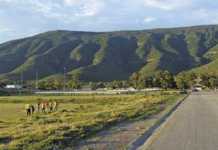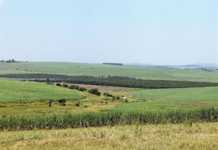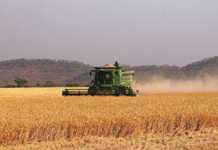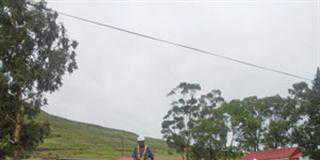
Could you tell me a bit about your own career, and give a short historical overview of the RSS?
I’ve been in the police force for 30 years. I lectured at the police college, and in 1996 I was appointed to the border police in the national office, and then to the section I’m in now, which is Pro-active Policing and Crime Prevention. I’m a policy person through and through, although I’m very in touch with what happens at an operational level.
Historically, concerns by the SA Agricultural Union (now Agri SA) regarding increased farm attacks and murders in the farming community led to a Summit on Rural Safety requested by former President Nelson Mandela in 1998. This resulted in the Rural Protection Plan (RPP), which aimed to improve the safety and security of farmers and farm workers and their families and visitors. The former Commando Units played a major role in the implementation of the RPP.
In 2003, in response to the escalation of rural crime, and to criticism that the RPP was biased in favour of commercial farmers, President Thabo Mbeki announced the phasing out of the SANDF Commando System and the creation of a new system which would serve the requirements of all rural communities. The current RSS strategy was developed to address inadequacies in the system the police inherited.
These inadequacies included poor strategy implementation guidelines and insufficient implementation support at station level. We also found that inter- and intra departmental policies were not aligned. There was a lack of accountability by role players and stakeholders, and stakeholder relations were generally poor. In certain areas, response times were slow and conviction rates were weak. We started developing the current RSS in 2005, launched two pilot projects in early 2011, and had the strategy approved in June 2011 for implementation from July 2011 through to 2014.
Would you elaborate on the pilot projects?
We launched pilot projects in Tsolo in the Eastern Cape and Harrismith in the Free State. These stations were chosen because of the incredibly high incidence of stock theft reported there. Within two months, we knew the concept worked. In Tsolo, stock theft fell by 60%. That station was the worst in the province and now it has dropped out of the top 10.
What makes this strategy likely to succeed where others have failed?
The most important thing that happened is we realised we couldn’t do it alone. We needed to look at an integrated approach between ourselves and government and rural communities, and we needed to look at a multi-disciplinary approach within our own organisation. We worked in silos; the stock theft unit investigated, the stations practiced crime prevention, the response units didn’t respond to rural incidents.
Now it’s really multi-disciplinary, everyone works together, and the government departments have come to the party. We’re working closely with the departments of agriculture and land reform and we’re establishing a partnership with the Department of Traditional Affairs. We’ve also worked with the agricultural unions, especially Agri SA.
As an example of how this co-operation can work, in Tsolo one of our big problems was the tattooing and branding of animals—stock owners simply weren’t doing it. The community came together with the agriculture department under the guidance of the police and bought branding equipment. The community was assisted with this, and there was an immediate impact on stock theft rates.
The RSS has been circulated to all the rural stations, but based on observations it does not seem that there’s been much implementation. How will you ensure that the plan is implemented fully?
It is a slow process, you’re right but we are making progress. After a meeting attended by all provinces on 15 and 16 May it was decided to align the RSS and the police Stock Theft Project, and to roll out the combined strategy to all provinces. That roll-out begins on 4 September in Umtata in the Easten Cape. We’re aiming for full implementation in at least 40 priority stations, but we’ve identified more than 90 stations, about 10 per province, where crime and stock theft are persistent. That will happen in the 2012/2013 financial year and the other stations will follow in the next financial year.
How do you define the limits of your strategy, i.e. what constitutes ‘rural’?
It was very difficult to define rural. An international analysis showed that globally, people have struggled to define the term for practical purposes. Statistics SA’s definition was unhelpful because they distinguish rural from urban on the basis of population density. In terms of this approach one or two areas in Limpopo were deemed to be rural whereas, for practical purposes, the province is predominantly rural. Finally, we agreed that if subsistence or commercial agriculture is practiced in an area and there is a lack of infrastructure, i.e. if it’s not a built up area, then we would consider it to fall within the limits of our strategy.
Are smallholdings included in your definition?
We have actually gone and defined smallholdings because it was a huge issue for us. Smallholdings are included in our definition of rural as long as they have not been subdivided into residential units.
Now that you have defined rural and urban, will you keep statistics on farm crime, including farm attacks?
We already do analyses on rural crime. I get upset when the media reports that we don’t know what’s going on in terms of farm violence. We do, and we share the information with our stakeholders, including the agricultural unions, so that they can warn farmers about their vulnerabilities, how they should react if there’s anything suspicious going on, co-ordinate with the police and so forth. This is operational information, which enables us to plan.
I haven’t reported it as statistics and I don’t intend to. The checks and balances that one gets on sophisticated corporate information systems, where data is centralised, are mainly absent from stand-alone databases. This operational information on commercial farms and smallholdings is contained in a stand-alone database, and is not fit for public dissemination. Based on what we know I can confidently say that rural crime is so diverse there isn’t any stand-out trend. In the vast majority of cases the crime is motivated by greed, nothing more.
Farm attacks were a priority crime. It is my understanding that they no longer have this rating in terms of the RSS. Is this correct?
Our principals, right up to the level of the Minister of Police, see rural safety as a priority. One of the comments made was that we should respond to rural area incidents as we would respond to a hijacking or a house robbery. But yes, when we refer to rural safety we mean the broader rural context, not only the farms. In our negotiations with the farmer unions it was very difficult for them to understand this.
There are 1 130 stations in the country, and although 60 % of those are rural, most crime occurs in urban areas. Your rural areas are in fact not your most dangerous areas. In 60% to 70% of these farm murder cases you see arrests immediately afterwards. Very few cases are unsolved after two weeks.
That said, we have focus areas within the strategy and one of our focus areas is incidents on farms and smallholdings. An incident on a farm or a smallholding is reported to our office within 24 hours by the relevant province. Incidents are analysed at weekly meetings where modus operandi and trends and tendencies are determined. After that we activate the necessary operation to address the problem.
In terms of the RSS the use of reservists is identified as a critical factor. The last time I checked, there was still a moratorium on reservist recruitment. How can the RSS succeed with a fundamental pillar missing?
I have positive news there. We had a situation where people were trying to force their way into the police, using the reservist system as a stepping stone to full employment. When this happened we changed our operational approach, but the Minister of Police wanted a national policy laying out the terms of reservist recruitment very clearly. That policy is shortly to be announced, after which we will start a recruitment launch.
There will be a real drive to recruit reservists, especially in the rural areas. The reservist system will no longer be a stepping stone to get into the police. Reservists will be able to join only in the sector where they reside, because recruitment will be based on a person’s desire to make his or her own area safe. We will then use these individuals to strengthen sector policing. If necessary, they can work across the sectors but their primary responsibility will be to their own sector. It will be volunteerism in the true sense of the word.
How will the leaders of organisations such as farmer associations, NGOs, and private security companies know what practical steps they can take to interact with the RSS?
We’ve developed guidelines which explain how individuals and organisations can develop a rural safety plan that interacts with the RSS. It explains how to perform a situation analysis, and what aspects of the situational analysis require particular focus. I’m going to share this with everyone at the roll-out meetings we’re having in every province.
Readers can follow Farmer’s Weekly’s future correspondence with Brigadier le Roux and her team on Sean Christie’s blog.












